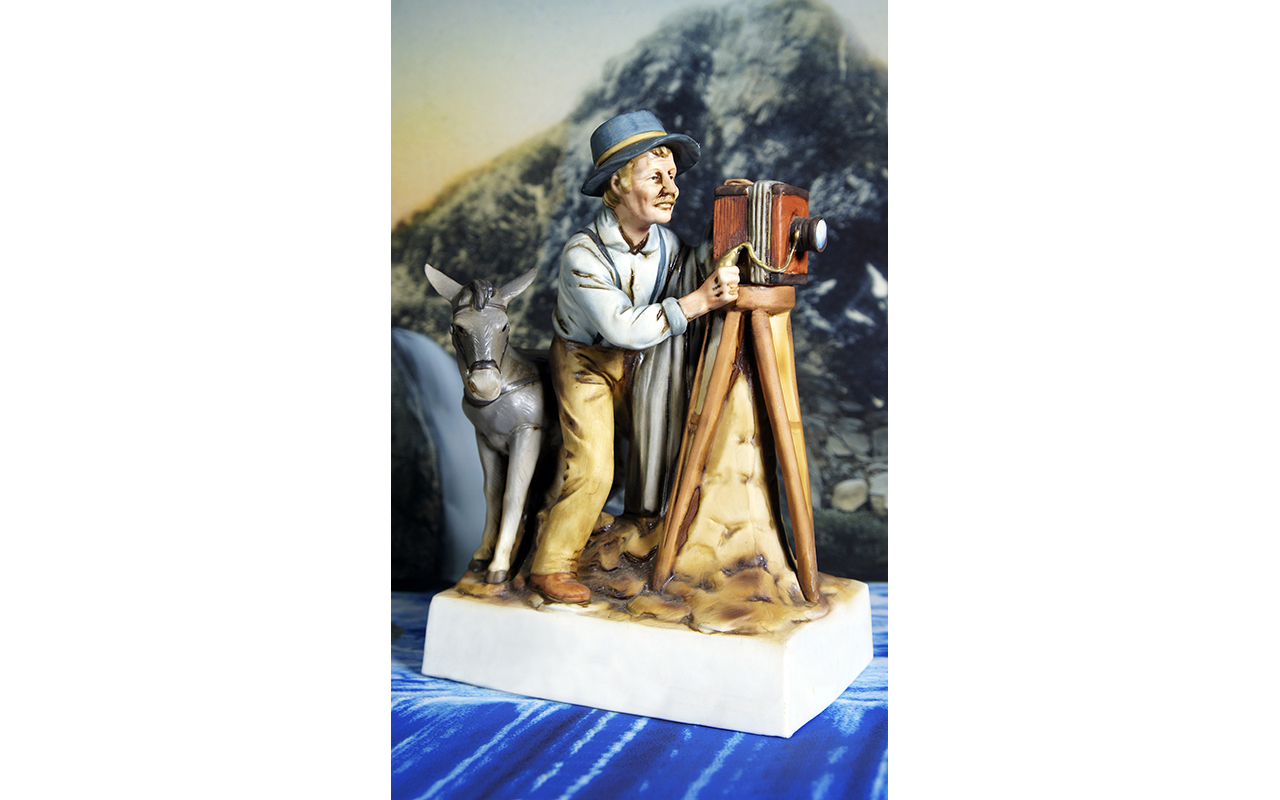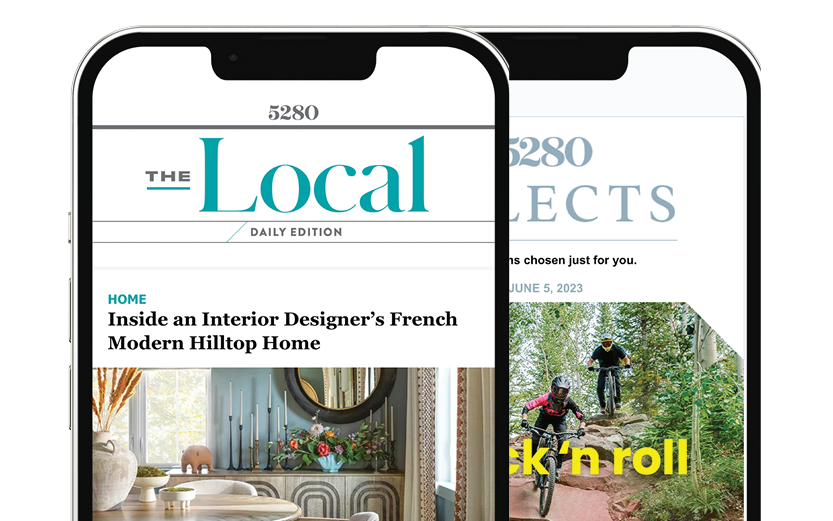The Local newsletter is your free, daily guide to life in Colorado. For locals, by locals.
Even if Gary Emrich wanted to, he probably couldn’t avoid references to the imagery and ethos of the West in his artwork. The 60-year-old, who resides in Denver, is a fourth-generation Coloradan; his ancestors first settled in the area around 1882. “I do think it influences me,” he says. “I don’t go out with a camera and make photographs of the West. But I do use objects to sort of talk about the role of the West. “
One quick look at Emrich’s work and you know he’s not talking about traditional photography; rather, you could call him a camera-based artist. Emrich constructs the objects that he photographs, often accompanied by found imagery, and also works in film. The results are captivating and often comical—and manage to reflect our own humanity back to us. Take his “Firewater Suite” series (an example is pictured above), in which he places cliché Western 1960s liquor decanters in front of an outdoor backdrop—a real water bottle label—and photographs it. They’re not only a humorous take on the evolution of the West but also comment on water, so very precious in this region, as a commodity. For Contact, he filmed honeybees in his garden and layered the visuals with audio and video recordings from early space explorations in order to “raise questions about how we select and edit certain pieces of information to build the stories we tell about ourselves.”

Both of those pieces—along with a second video installation and a series of abstract works made using the discarded packaging that encases the items we actually want—are currently on view at the Colorado Springs Fine Arts Center in Gary Emrich: Promise (through May 15). “I’m interested in what people save and the process that we go through to save the things that we save—and then I find myself editing what people save,” Emrich says.
One might think he titled the show Promise in an ironic nod to how humanity has often voided its handshake agreement with Mother Nature. But he didn’t. Instead, it’s about the wit and hope he sees in his pieces, as well as Emrich honoring a deal he made with himself to create artwork that makes him happy. That optimism is perceptible in all of his works, but if you peel back the layers you’ll find underlying reminders to be more aware of the world around us and how we treat it.








